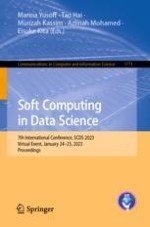2023 | Book
Soft Computing in Data Science
7th International Conference, SCDS 2023, Virtual Event, January 24–25, 2023, Proceedings
Editors: Marina Yusoff, Tao Hai, Murizah Kassim, Azlinah Mohamed, Eisuke Kita
Publisher: Springer Nature Singapore
Book Series : Communications in Computer and Information Science
